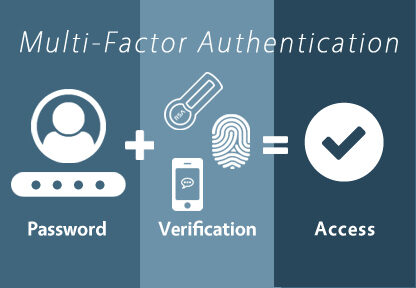Top 13 Tech Vulnerabilities That Could Cost Businesses Millions
Technology plays a crucial role in our daily lives, revolutionizing how we work, communicate, and conduct business. Nevertheless, the growing dependence on technology has also brought about an escalation in cyber threats and vulnerabilities. In today’s digital realm, it becomes imperative for businesses and industries to take proactive measures in tackling tech vulnerabilities. The goal is to safeguard sensitive information, retain customer trust, and ensure smooth operations. This article delves into 20 critical tech vulnerabilities that demand immediate attention from businesses and industries, paving the way for a secure and resilient digital landscape.
Read More: Why Should Cybersecurity Be Top Of Mind In 2023 & Beyond?
1. Sensitive Data In Open Buckets
A concerning statistic reveals that one out of every five public-facing cloud storage buckets holds sensitive data. Traditional security infrastructure lacks the capability to protect such critical information adequately. While “misconfiguration” is often blamed for exposure incidents, the reality is that the data is frequently misplaced and should never have been stored in an open bucket in the first place. To address this issue, organizations must ensure they have comprehensive observability of their data. This way, they can take proactive measures to safeguard sensitive information effectively.
2. Lack Of Multi-factor Authentication
The lack of multi factor authentication (MFA) is a significant concern when it comes to business email compromise, particularly through phishing or spear phishing attacks. These incidents often lead to credential theft, becoming a major cause of breaches. While many organizations claim to implement MFA, the reality is that it has not been deployed to every employee and authentication use case. To mitigate the impact of such attacks, it is crucial to make MFA a requirement for all employees. By doing so, businesses can substantially reduce the risk of falling victim to business email compromise and other cyberattacks.

3. Not Requiring SBOMs
The universal requirement of software bills of materials (SBOMs) is crucial in reducing software compromise. SBOMs can be likened to nutrition labels for software, providing consumers with vital information. Many consumers need to be made aware that software is composed of modules containing code from various suppliers. By listing the “ingredients” of software, accountability is established, empowering customers to make more secure choices.
4. Insecure IoT Devices
The tech sector must address the vulnerability of Internet of Things (IoT) devices, as their security remains a significant weakness. These devices are increasingly prevalent in both residential and corporate settings, yet many lack robust security measures, rendering them susceptible to cyberattacks. To tackle this issue effectively, the tech industry should take several proactive steps. These include bolstering IoT device regulation, promoting security awareness and education among users, and elevating device security requirements.
5. Investment In Cloud Infrastructure
From enterprise resource planning systems to office productivity tools, and from data backups to high-availability services, any significant failure in cloud infrastructure can severely impact or even lead to the closure of businesses. The “cloud” is constantly exposed to various risks, be it from hacking, power grid failures, viruses, or potential acts of war. To tackle this vulnerability, companies should consider divesting from the cloud and reinvesting in on-premises and on-device solutions.
Also Read This: Why Is Cloud Migration Crucial For Your Business Success
6. Need to Address Ethics in AI Adoption
One concerning tech vulnerability lies in the persistent and exclusive reliance on ineffective email-based methods for account recovery. This means that if a user’s email account is compromised, regaining control of linked accounts becomes an arduous task. To address this issue, organizations must overhaul their account recovery processes and adopt alternative offline methods for identity verification. Encouraging the widespread adoption of multifactor authentication (MFA) will also significantly enhance security.
7. Critical Vulnerabilities in Supply Chains
An alarming tech vulnerability lies in the prevalence of unsecured supply chains, making supply chain attacks a significant concern that demands immediate action. These attacks can compromise trusted software or hardware, thereby infecting downstream users. To protect defences, it is imperative to focus on securing the development process, introducing rigorous testing, and implementing continuous monitoring to detect any unusual activity. Regular audits and enhanced transparency among suppliers are essential measures to effectively mitigate risks.
8. Unprotected APIs
The tech industry faces a critical need to address the vulnerability of unprotected application programming interfaces (APIs). Hackers are increasingly targeting APIs, resulting in detrimental data breaches. To effectively mitigate this risk, organizations must conduct a comprehensive inventory of all APIs, actively monitor traffic, and implement measures to proactively block high-risk activities. Adopting this proactive approach will fortify security measures, protect sensitive data, and ensure uninterrupted business operations.
9. Moving Beyond Vendor Reliance
A significant mistake lies in the over-reliance on third-party vendors’ security systems. Neglecting to secure sensitive data entrusted to these external systems poses immense risks, even for companies with robust internal security measures. To ensure asset protection beyond the corporate perimeter, it is essential for leaders to adopt a zero-trust mindset. This involves actively monitoring and establishing stringent controls for all activities within their network.
10. Poorly Designed Or Untested Software
Frequently, vulnerabilities lurk within the fundamental design of software. During the development of a new product, companies must diligently test its logic and design to eliminate any possibility of unauthorized access, such as outsiders gaining entry to certain pages via direct links without requiring authentication. This proactive testing approach ensures robust security measures and enhances the protection of sensitive data.
11. Empowering Proactive Information Sharing
In the tech industry, fostering a culture of collaboration and proactive information sharing concerning emerging threats and vulnerabilities is paramount. Encouraging organizations to stay ahead of these challenges by staying informed and sharing knowledge promotes innovation and bolsters the collective ability to effectively address cybersecurity risks.
12. Enhancing Security for Older Devices
The absence of security updates for older devices presents a significant concern in the tech industry. While Apple stands out for its continued provision of security updates even for devices as old as the iPhone 5s, many other brands must strive to improve in this area. Considering that a substantial number of users, particularly older individuals, still rely on older devices, addressing vulnerabilities in these products becomes a crucial matter. Brands should prioritize offering extended support for older devices and raise awareness among their user base regarding the importance of regular updates.
13. Human Error
One tech vulnerability that requires immediate attention is the human factor in cybersecurity. Despite technological advancements, human errors continue to pose a significant weak point in the overall security landscape. To effectively address this challenge, the industry should prioritize investments in comprehensive training programs. These programs will educate users about best cybersecurity practices, raise awareness regarding social engineering tactics, and foster a security-conscious culture within organizations.
Final Word!
Within the dynamic digital landscape, businesses and industries confront an array of tech vulnerabilities that have the potential to jeopardize their operations and reputation. Taking a proactive stance, organizations can protect their defenses by addressing these vulnerabilities, implementing stringent security measures, and cultivating a culture of cybersecurity awareness. By doing so, they enhance their resilience against cyber threats and effectively safeguard their valuable assets.





![[New checklist] What to keep in check when planning a big data pilot?](https://alliedc.com/wp-content/uploads/2015/08/Elephant-150x150.png)

